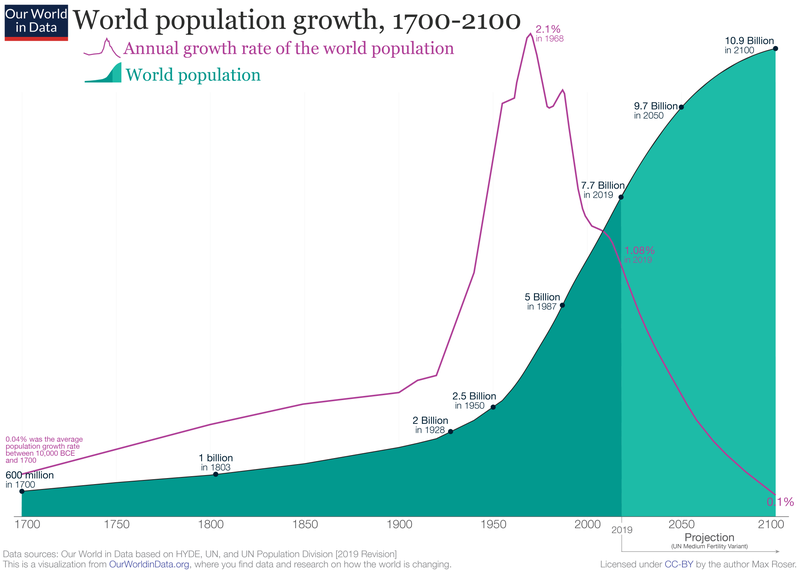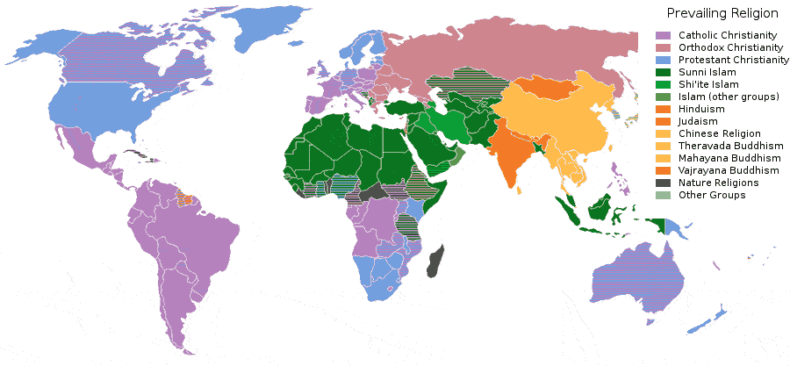As a consequence of the rise in world population growth from several African developing nations, the world population is estimated to reach the 8 billion mark by Tuesday according to a United Nations projection.

This rise in world population creates a predicament in terms of resource scarcity, particularly in countries such as Nigeria where the people are already facing scarcity regarding several essential resources that include even basic ones like water, food, and electricity.
The UN also added that Nigeria’s population is most likely expected to rise from 216 million this year to 375 million in three decades. This would consequently will make Nigeria the fourth-most populous country in the world after India, China, and the United States.
“We are already overstretching what we have — the housing, roads, the hospitals, schools. Everything is overstretched,” stated Gyang Dalyop who is a consultant for urban planning and development in Nigeria.
This rise in world population would create setbacks for people in developing countries in particular as governments face a handful of challenges such as providing opportunities in education and employment for the exponentially rising youth.
Attaining food security is another challenge faced by governments as resources are scarce and to add to this, the available resources are not being utilized sustainably.
ANALYSIS AND INTERPRETATION
Rapid world population growth also means more people vying for scarce water resources and leaves more families facing hunger as climate change increasingly impacts crop production in many parts of the world.
“There is also a greater pressure on the environment, increasing the challenges to food security that is also compounded by climate change,” said Dr. Srinath Reddy, president of the Public Health Foundation of India.
“Reducing inequality while focusing on adapting and mitigating climate change should be where our policymakers’ focus should be.”
Still, experts say that the bigger threat to the environment is consumption, which is interestingly not the highest in the highly populated developing countries but actually in developed countries that are not going through population increases.
“Global evidence shows that a small portion of the world’s people use most of the Earth’s resources and produce most of its greenhouse gas emissions,” says Poornima Muttreja who serves as the executive director of the Population Foundation of India.
“Over the past 25 years, the richest 10% of the global population has been responsible for more than half of all carbon emissions.”
Families typically become larger as and when women start having children early on in life.
According to data recorded by the U.N, every 4 out of 10 girls in Africa marry before the age of 18. Another interesting related data to be observed is that Africa has witnessed the highest rate of teen pregnancy in the world, as about half of the children born to mothers under 20 last year were in sub-Saharan Africa.
It is also important to keep in mind that there are several important cultural reasons for large families. In sub-Saharan Africa, having children is portrayed as a blessing from God and is seen as a source of comfort who would support you when you grow older and finally into retirement.
Read Also: Wildlife populations on the risk of extinction says report
Politics also have played a key role in this matter in Tanzania, where John Magufuli, the former President who ruled from 2015 until his death in 2021 thought that an increase in population was a mark of growth in the economy and hence he discouraged all forms of birth control.
This also included family planning programs that were promoted by external groups, and in a speech in 2019, he even urged women not to “block ovaries.” He went so far as to describe users of contraceptives as “lazy”.
Under his term, schoolgirls were banned from returning to classrooms if they were to get pregnant. However, the government policies that were implemented under Samia Suluhu Hassan who was Magufuli’s successor were opposite in the sense that she advocated the use of birth control and deemed it necessary so as to not overwhelm the public infrastructure of the country.

WORLD POPULATION IN THE FUTURE

Even though in certain countries there has been a rise in world population, according to the U.N, these high rates are expected to settle down and drop by an estimated 1 % or even more in the case of about 61 nations.
As reported by the U.S Census Bureau Data, the U.S. population is now around 333 million. Adding on to this, the world population growth rate reached an all-time low rate of 0.1% in 2021 which is the lowest rate recorded since the country was founded in 1776.
According to Charles Kenny who is a senior fellow at the Center for Global Development environmental concerns surrounding the 8 billion mark should not only focus on reducing the population but must also focus on consumption.
If we are to make small changes in our consumption patterns, that would create ripples of change that could potentially bring the world population down to a great extent.












